The 2012 MacBook Pro Review
by Vivek Gowri on July 18, 2012 2:00 PM EST- Posted in
- Mac
- Apple
- MacBook Pro
- Laptops
- Notebooks
From a performance standpoint, the 2012 MBP lines up basically where we would expect it. My tester was the high-spec SKU with the same 2.6GHz i7-3720QM, 8GB of DDR3, and 1GB GT 650M as Anand’s Retina MacBook Pro evaluation unit, with the primary hardware difference being the 750GB mechanical hard drive in place of the Samsung PM830-based SSD in the rMBP. Performance matched up pretty close, with the MBP being just a tick behind the rMBP in most of our benchmark suite. And with the performance deltas we're talking about, it's really almost like splitting hairs.
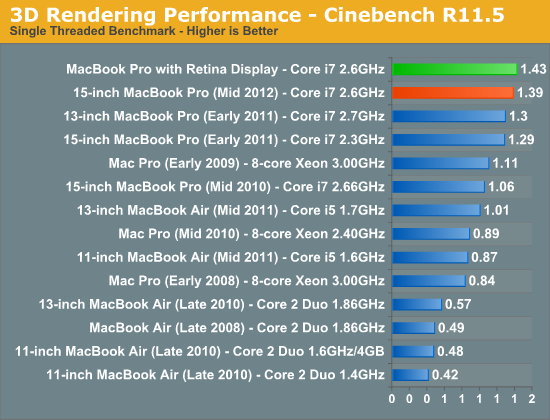

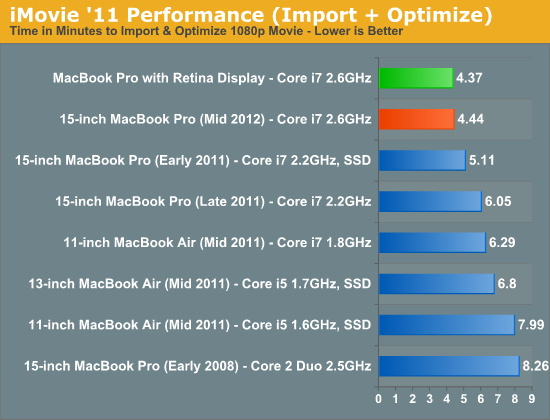

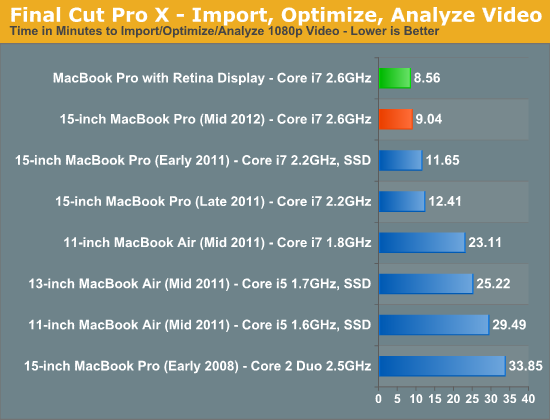
It appears that the i7's Turbo mode is less aggressive in the MBP versus the Retina, possibly due to the revised cooling system that the Retina model has. The 2012 MBP retains the same thermal design as the 2011 model, so it's unsurprising to see that Apple is being more cautious with it.
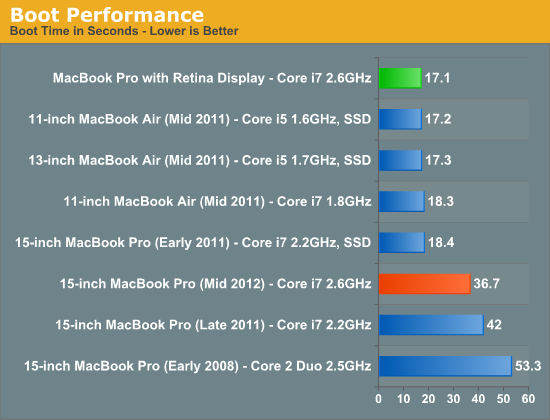
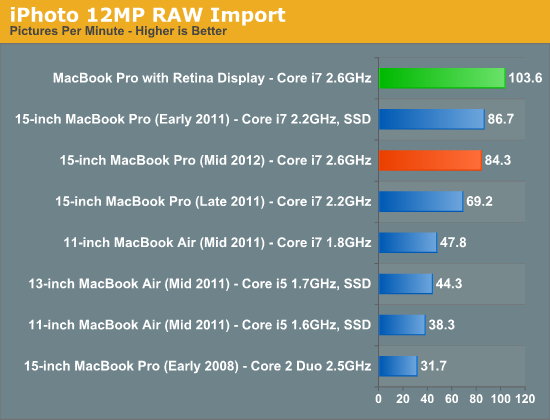
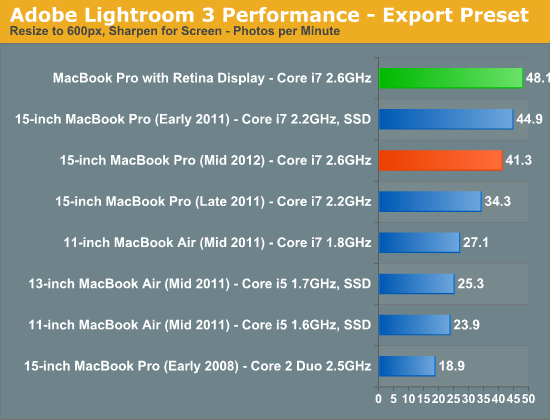

The SSD-based Retina obviously has faster boot times and performs significantly better in any disk-based activity. Based on my limited experiences with the Retina, it really feels substantially more responsive. Our usual recommendation from the last couple of years stands here too: if you're buying a new MacBook Pro, your first upgrade should be to add an SSD.
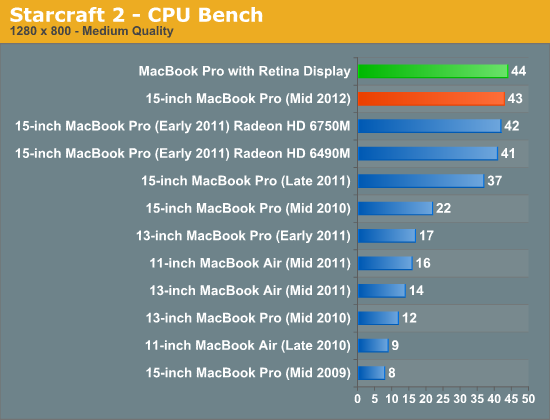
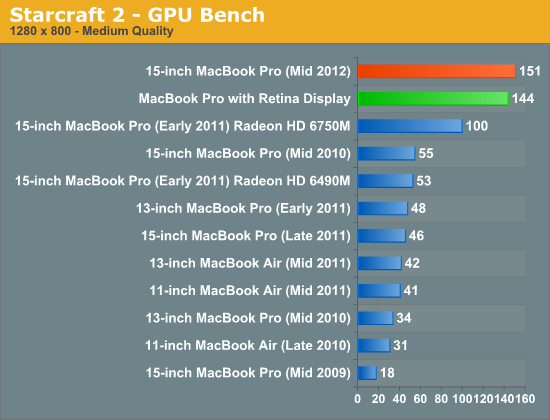
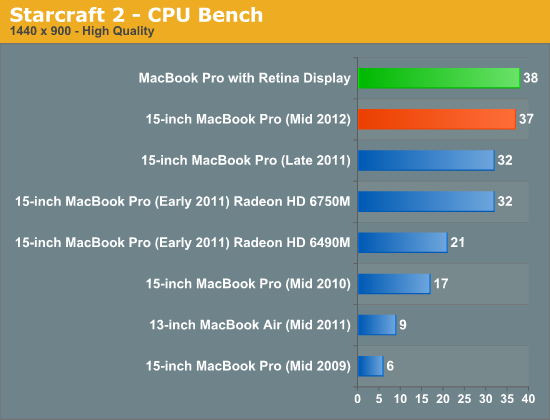
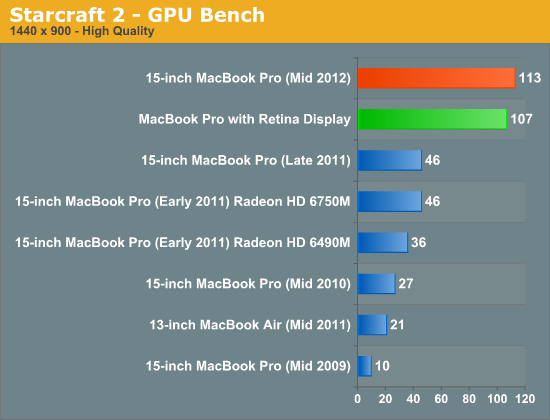
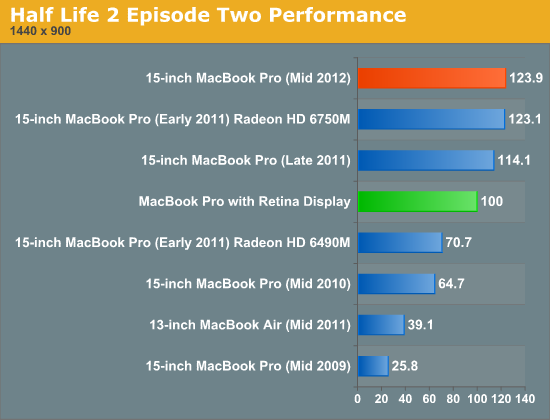
GPU performance is substantially improved over the 2011 MBP, with the GT 650M outpacing both the HD 6750 and 6770, to say nothing of the HD 6490 in the early 2011 Pro. We saw roughly equivalent performance with the rMBP again, with the MBP maintaining a slight edge over the Retina, but again with a margin of less than 5%.
We took a look at performance over time, and as expected, Ivy Bridge and Kepler do a really good job of minimizing heat buildup over time and the corresponding amount of throttling that occurs. Through 40 runs of our Half-Life 2 test (at native res with maxed out settings), I ended up with nearly identical numbers the entire way through, with a very slight downward trend emerging (the delta between the average of runs 2 through 10 was a bit under 1% better than the average of runs 32 through 40). It's pretty much a flat line all the way across, the new chips really let the MBP run at significantly lower temperatures. Using it versus a Core 2 or SNB MacBook Pro, it noticeably doesn't get anywhere near as hot to the touch in day to day use.
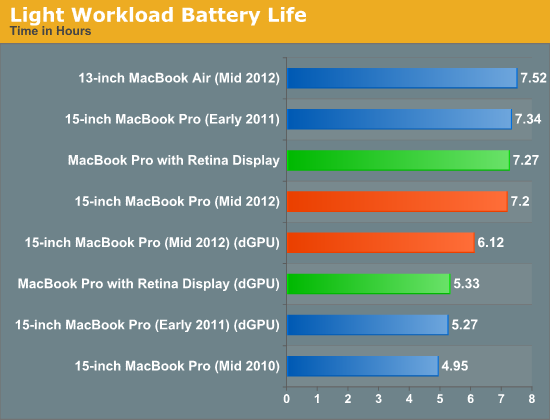
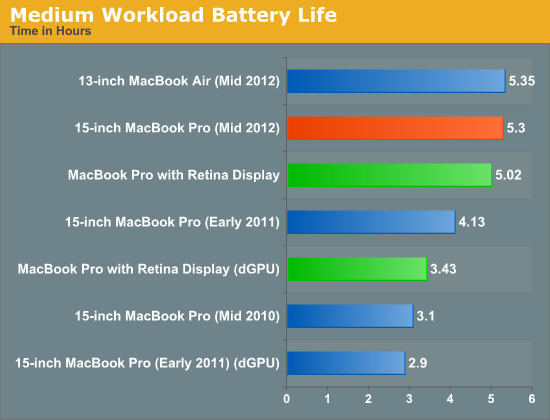
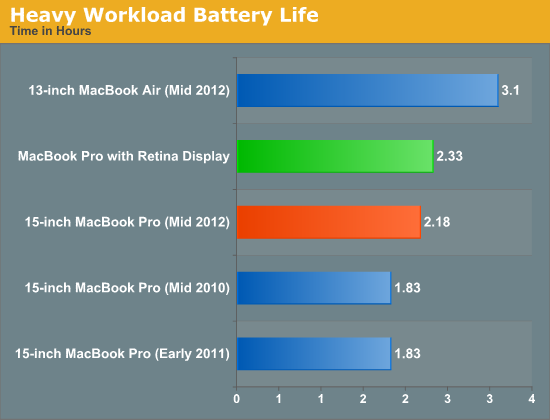
Battery life is pretty solid – we got a bit over 7 hours in our light web browsing test (with dynamic GPU switching on), a hair over 6 with dynamic GPU switching off (forcing the GPU to stay on), close to 5.5 hours in our medium-heavy browsing workload, and a bit over 2 hours in our brutal, heavy use case test (which adds a 1MB/s file transfer and a looping 1080p video to our heavy browsing test). Apple quotes 7 hours of “normal” use, and that’s about right based on my standard usage – if you use your notebook for light browsing and word processing with medium levels of brightness, you’ll get at least 7 hours if not a bit more. Obviously, once you start hitting the dGPU hard, it’ll die pretty quickly, but at least GPU efficiency has improved enough that just leaving the GPU on in light workloads doesn’t run down the battery too much.


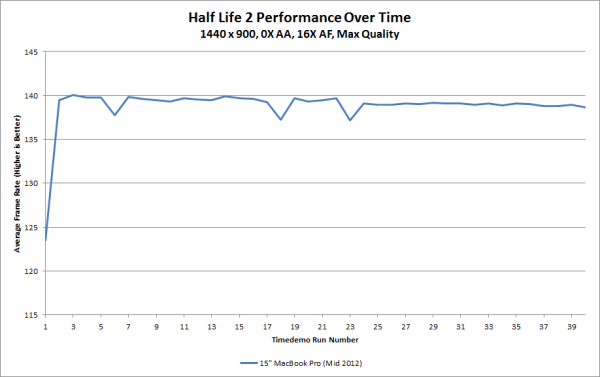








132 Comments
View All Comments
tipoo - Thursday, July 19, 2012 - link
Maybe saving the quad for the Retina 13"?Death666Angel - Friday, July 20, 2012 - link
TDP is the same, maybe actual power consumption and thermal development not? :-) Or they are saving it for the rumoured 13" rMBP. *spooky sound*SantaAna12 - Wednesday, July 18, 2012 - link
Macbooks only compared to other Apples.......comon. Every once in awhile you guys do this.....shades of Toms antics. YOU ARE BETTER THEN THIS!juanml82 - Wednesday, July 18, 2012 - link
People who have invested in Firewire external drives will need the firewire port. I see practical reasons for that port to remain, while there are no practical reasons to remove it other than FW800 not being new and flashy anymore.I just don't see the value in breaking backwards compatibility unless it adds to much to the final cost.
inplainview - Thursday, July 19, 2012 - link
People who invested in FW drives can use Firewire over Thunderbolt when the adapter drops. Did you really miss that part?Freakie - Thursday, July 19, 2012 - link
Those who invested in firewire so heavily are usually Mac users and already have had a limited selection of devices to chose from compared to those rooted in USB which means there aren't many of them. Most people who are able to see an unpopular connection when it comes around were able to stay with USB/Ethernet and it's payed off just fine. If you want to make sure you aren't going to break backwards compatibility in the future again, then stick with USB 3.0. Thunderbolt wont gain all that much momentum, and the number of USB 3.0 ports on the rMBP shows that even Apple knows that it's not going far (not to mention they didn't exactly have much work to do since Intel made it possible for them... typically Apple laziness)But seriously, it's either just bad luck (being a Mac user and not having a wide range of devices to chose from, and so your professional devices often used firewire) or lack of forsight that got you (or anyone else) in that position. Now that you have two choices for high speed interface, it should be easy to avoid it happening again.
pmhparis - Thursday, July 19, 2012 - link
The subject of this article is the non-retina MBP.Where do you see that the FW port has been removed from the non-retina MBP?
Death666Angel - Friday, July 20, 2012 - link
Anand did talk quite a bit about how he would like those connection (ethernet, FW) to be done with in the next MBP redesign. And he praised the rMBP for doing just that. So the reader is just expressing his opinion vs Anand's.However, considering that there will be both ethernet and firewire adapters for thunderbolt, I see no reason to complain.
Bonzauker - Wednesday, July 18, 2012 - link
Does anyone have an idea why the external display still requires the discreet card? It's the main reason for noisy operations but, as far as I know, Intel 4000 should be able to handle it.Death666Angel - Friday, July 20, 2012 - link
Maybe some channel muxing issues/how the external port is connected to the CPU/GPU.